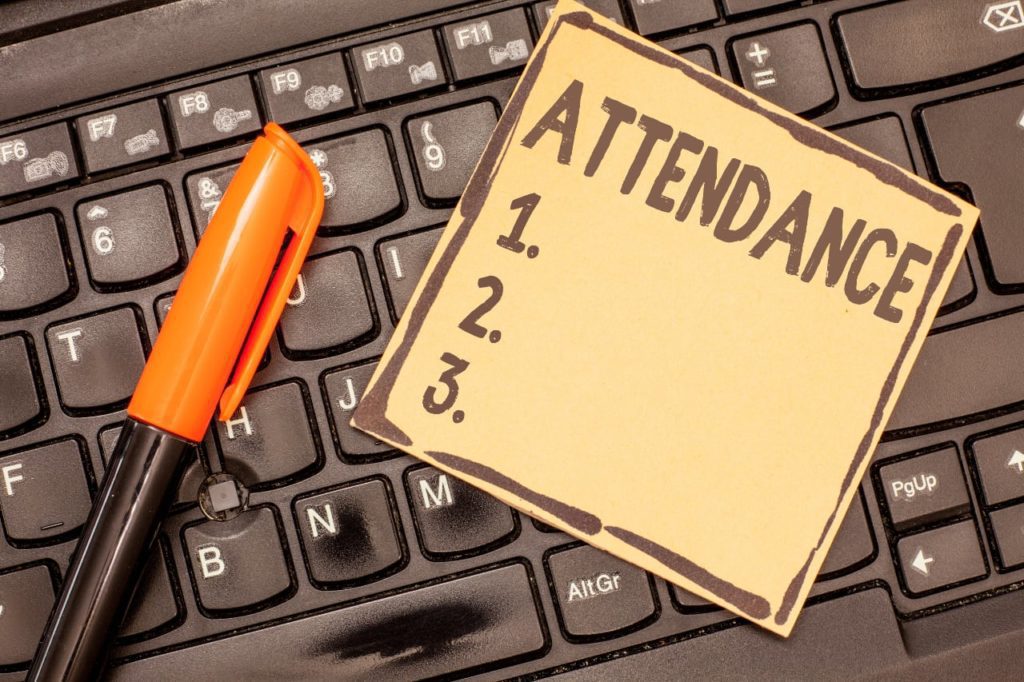Monitoring employee attendance must be consistent and accurate. However, many businesses are still using outdated and inefficient methods. With effective and efficient employee attendance monitoring, you will increase productivity and avoid losing money.
In this post, you’ll learn about some helpful tips on properly monitoring employee attendance patterns to benefit your organization.
What Is An Employee Attendance Pattern?
An employee attendance pattern indicates how often an employee clocks in late or on time for work. It also entails the frequency of presence and non-presence at work with or without a valid cause. The schedule and attendance patterns are tracked based on the start time and log-out time of employees during their workdays.
Having a dedicated employee attendance tracking system is a great way to quickly analyze employee attendance, work patterns, and overall productivity. Read on to find out more about the best way to monitor your employees’ attendance.
How You Can Monitor Your Employee Attendance Patterns
Now that you’re aware of what employee attendance pattern is all about, it’s time to know the tips you can apply to properly monitor this important aspect of your daily business operations.
1. Determine The Common Types of Workplace Absence
Employees provide different reasons on why they were late or absent. Excused absences usually involve emergency or grave situations. On the other hand, unexcused absences refer to absences that aren’t authorized by the employee’s superior or aren’t scheduled ahead of time.
Employers provide sick and vacation leave credits that employees can use either to take one or several days off due to sickness or to plan their family activities or vacation and still get paid. While such policies are in place, determining the common types of workplace absence in your company is important as it can help you avoid unnecessary costs in terms of time and money. Also, when you identify the causes behind your employees’ absenteeism, you can come up with the proper solutions that can help maintain happier and healthier workers.
Check the following examples of excused absences:
- Sick Time: It is a form of absence due to a health-related issue, wherein going to work may aggravate the medical condition or can cause transmission of infection that can compromise others’ health and safety.
- Personal Time: This form of absence involves the employee’s need for personal time to work on a project or to recharge because of burnout. This is considered an excusable absence from work because it usually includes planned events such as birthdays, weddings, and even unexpected situations such as accidents or any emergency. While some companies include it as part of their employee benefits package, this personal leave may also be unpaid since the federal law doesn’t actually require employers to offer it with pay.
- Vacation Days: For some companies, this leave of absence must be requested several months ahead to avoid work conflicts.
- Others: The other types of excused absences include family leave, sympathy or bereavement leave, and jury civic duty.
2. Use The Right Tools
Using the right employee attendance monitoring tools will help you determine any absenteeism or tardiness problem among your employees. With some tools in place, you’ll also be able to figure out the potential reasons why problems about absenteeism occur or recur as well as the appropriate solutions for them.
Employee attendance monitoring systems are now automated and more advanced than before, allowing you to manage employee schedules and monitor attendance accurately. When using this, employees need to log-in on an automated system using their valid credentials to be counted ‘present’ to work.
For HR professionals, the following tools can be used in monitoring employee attendance patterns:
- Weekly time report generators
- Spreadsheets for ‘time in’ and ‘time out’
- Attendance tracking software
3. Strengthen Your HR and Employee Relations
There’s a stigma associated with human resources and employee relations, wherein human resource personnel are regarded as pro-management and anti-employees. Some employees may think they’re involved in some office politics, which may affect your HR and employee relations. For this reason, it is important to find ways on how you can strengthen your HR-employee relations.
Here’s how a good HR-employee relationship can help in monitoring and improving employee attendance patterns:
- Establish Trust: A good HR-employee relationship can be of help in keeping track of employee attendance patterns by building trust among your workforce. When your HR personnel knows how to listen and encourage them to express their thoughts, they’ll be more comfortable about sharing the possible reasons for their recurring absences and other attendance problems. This also applies to employees and their immediate superiors.
- Dive Deep: Having a good HR-employee relationship can also become beneficial in monitoring employee attendance patterns by conducting an in-depth analysis as to why some of your employees are absent or tardy. When your workers trust your HR personnel, it’ll be much easier for you to dive deep and create better strategies to help them avoid these problems. This is especially true for employees who need any sort of professional help.
4. Counseling
One of the best ways to identify employee attendance patterns is by talking with the concerned employee and providing the necessary help they need such as counseling. Typically, counseling can be a great way for the immediate superior to address concerns about a certain employee, such as absenteeism. Make sure to take your employees’ counseling session by asking them why there’s an attendance problem going on.
While your employee may hesitate to provide the real reason at first, but with due diligence and proper approach, you’ll earn your employee’s trust and confidence, thereby helping them improve their attendance patterns in the long run. Remember, encouragement and constructive criticism will definitely help, but reproach most likely won’t.
Conclusion
Monitoring your employee attendance patterns is important to avoid losing top talents and ensure productivity in the workplace. That is why using the right employee attendance monitoring tools is imperative to determine attendance employee patterns. Also, it would help to interview the concerned employees and directly ask the reasons why they’re always tardy or absent to understand them better and help them break these habitual non-presence patterns.



